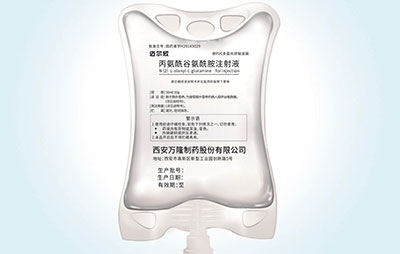What is LVP in pharmacy?
A Parenteral Drug (LVP, SVP) is defined as one intended for injection through the skin or other external boundary tissue, rather than through the alimentary canal, so that active substances they contain are administered, using gravity or force, directly into a blood vessel, organ, tissue, or lesion. They are infused when administered intravenously (IV), or injected when administered intramuscularly (IM), or subcutaneously into the human body. A large volume parenteral (LVP) is a unit dose container of greater than 100ml that is terminally sterilized by heat. Small volume parenteral (SVP) is a "catch-all" for all non-LVP parenterals products except biologicals.

Different types of large volume parenterals solutions
According to the different clinical use,
large volume parenterals solutions can be roughly divided into 5 types, which are basic infusions, nutritional infusions and therapeutic infusion, plasma substitute, and contrast agents.
Basic infusions are the most regular type of large volume parenterals solutions. It is widely used all over the world. The regular used basic infusions are as below:
* Glucose infusion 5%, isosmotic solution, mainly used for dehydration such as hyperhidrosis and diarrhea.
* Glucose infusion 10%, mesosmosis solution, mainly used for energy supply after fatigue disease and surgery.
* Sodium chloride infusion 0.9%, can be used for water loss caused by various reasons.
* Glucose and sodium infusion, mainly used as electrolyte supplement.
* Ringer lactate infusion, mainly used for metabolic acid toxicosis or dehydration caused by metabolic acid toxicosis.
Nutritional infusions are popular in some countries. Below are a few popular products:
*
Alanyl glutamine Injection, mainly used for patients in catabolic and hypermetabolic conditions that need glutamine.
* Compound Amino Acid Injection, amino acid intravenous nutrition drugs for clinical nutritional support, widely used in some countries after surgery.
Therapeutic infusions are glucose or sodium solution contains active pharmaceutical ingredients. The most commons are as below:
* Metronidazole infusion, antiobics.
* Ciprofloxacin infusion, antiobics.
* Paracetamol Infusion, NSAIDs for pain relief and anti fever.
* Levofloxacin lactate infusion, antiobics.
* Fluconazole infusion, antiobics.
Plasma substitute
Common products are Hydroxyethyl Starch 130/0.4 and Sodium Chloride Injection and Hydroxyethyl Starch 200/0.5 and Sodium Chloride Injection.
Contrast agents
Common products are adopentetate imeglumine injection, gadobutrol injection, iohexol injection, and iopamidol injection.
